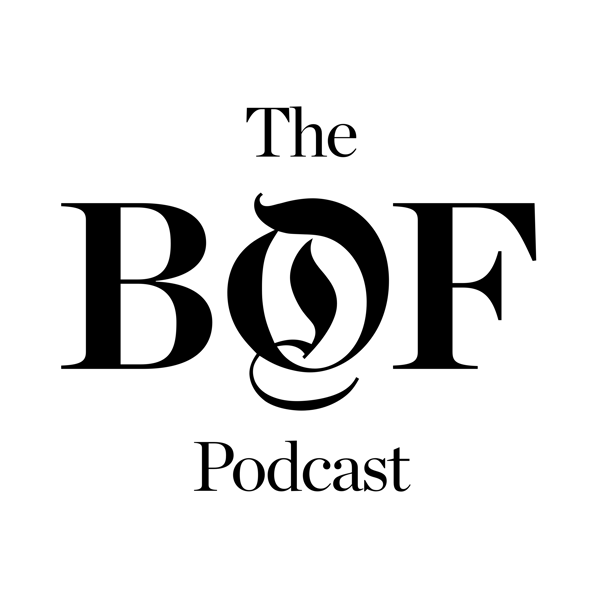Bonus: The Trade War’s Off, For Now. What's Next for Fashion?
The Business of Fashion Podcast
The Business of Fashion
4.6 • 770 Ratings
🗓️ 15 May 2025
⏱️ 30 minutes
🧾️ Download transcript
Summary
On May 12, the US and China reached a deal to temporarily reduce tariffs for 90 days, offering a breather from an escalating trade war. Stocks surged on the news, but experts warn this relief might not fully resolve deeper industry uncertainties or consumer anxieties.
BoF retail editor Cathleen Chen and technology correspondent Marc Bain join hosts Brian Baskin and Sheena Butler-Young to unpack the ramifications of the tariff pause and what the fashion industry can expect moving forward.
Key Insights:
- Tariffs have reduced, but costs still remain high. The Trump administration’s initial 145 percent tariff effectively banned imports from China, a situation now alleviated but not fully resolved. "Lowering that to 30% is a different situation," Bain explains. "It's saying, go ahead, import your stuff, but it's gonna still be expensive."
- The tariff pause offers temporary clarity, but major production hubs like Vietnam and Cambodia face continuing uncertainty. "Depending on what happens with those negotiations, the whole landscape could shift," Bain notes, as retailers remain cautious about long-term production decisions.
- Tariffs are not the industry's only concern as consumer sentiment will significantly shape demand. "Beyond what's going to happen with tariffs with dozens of countries, there's also the issue of consumer confidence and sentiment and whether there will be demand to drive sales for the products that do end up in the U.S.," Chen highlights, questioning the robustness of future sales.
- Despite an easing in the tariff rate for small shipments from platforms like Shein and Temu, the overall uncertainty around the future of the “de minimis” loophole might dampen consumer enthusiasm. "All the news about Shein and Temu has been enough to just keep that customer away," Chen suggests. "I feel like there might be this attitude of, we had a good run of really cheap stuff for a couple of years and maybe you've had enough of it now."
- Brands should focus on diversifying their supply chains and strengthening industry partnerships. Bain advises brands to "have some redundancy built in. So if one location becomes untenable, you can shift to another spot." Meanwhile, Chen emphasises the importance of collaboration: "Now is a really great time to forge stronger ties to your suppliers, your vendors, even your retail partners," ensuring shared responsibility and minimised impact on consumers.
Additional Resources:
Hosted on Acast. See acast.com/privacy for more information.
Transcript
Click on a timestamp to play from that location
| 0:00.0 | Hello and welcome to the debrief from The Business of Fashion, where each week we delve into our most popular B.O.F. professional stories with the correspondents who created them. I'm executive editor Brian Baskin. |
| 0:19.2 | And I'm senior correspondent correspondent Sheena Butler Young. |
| 0:22.4 | On Monday, May 12th, the U.S. and China announced a deal that would have both countries lower tariffs for three months. |
| 0:29.4 | The rest of the day played out like Liberation Day in reverse. |
| 0:33.0 | Fashion stocks rallied and business owners across the industry breathe a huge sigh of relief. But is the |
| 0:39.2 | trade war really over? And even if it is, can fashion ever go back to how things were on April 1st? |
| 0:45.2 | Joining us to discuss our B-O-F retail editor Kathleen Chen and B-O-F correspondent and tariff guru, Mark |
| 0:51.3 | Bain. Hi, Kat, hi Mark. Welcome to the debrief podcast. |
| 0:54.8 | Hey, guys. |
| 0:55.8 | Hey, Sheena. |
| 0:56.8 | So I think we should start with what is becoming my favorite reoccurring opening question on the debrief, which is, |
| 1:03.4 | Cat, Mark, what just happened? |
| 1:05.6 | So on Monday, after a weekend of talks between the Trump administration and China, we got a deal |
| 1:13.0 | that would essentially de-escalate the trade war for a 90-day period. We'll see what happens |
| 1:19.3 | at the end of that period. But for now, the giant tariffs that the U.S. and China had put on |
| 1:25.5 | each other's goods have come down, not all the way, but down significantly. So the U.S. and China had put on each other's goods have come down, not all the way, |
| 1:28.3 | but down significantly. So the U.S. tariff on China goes from 145 percent down to 30 percent, |
| 1:36.3 | and the Chinese tariff on U.S. goods went down from 125 percent to 10 percent. |
| 1:42.3 | Why did the U.S. and China decide to ease tensions now? Like, what was driving the |
| 1:46.8 | decision now? Or do we even know? Because it seems like we often don't know. I mean, I think it's |
| 1:51.2 | just because both sides were aware that this was not going anywhere good. The analysis that I've |
| 1:57.4 | generally seen is that the Trump administration blinked, that China really held firm, and the U.S. is kind of the side that backed down first. |
... |
Please login to see the full transcript.
Disclaimer: The podcast and artwork embedded on this page are from The Business of Fashion, and are the property of its owner and not affiliated with or endorsed by Tapesearch.
Generated transcripts are the property of The Business of Fashion and are distributed freely under the Fair Use doctrine. Transcripts generated by Tapesearch are not guaranteed to be accurate.
Copyright © Tapesearch 2025.

